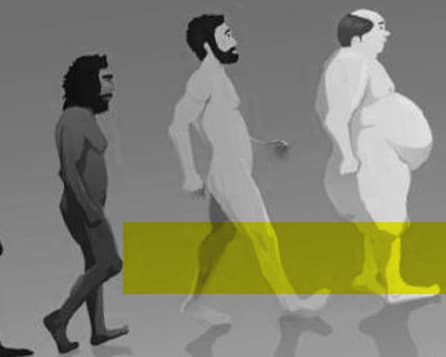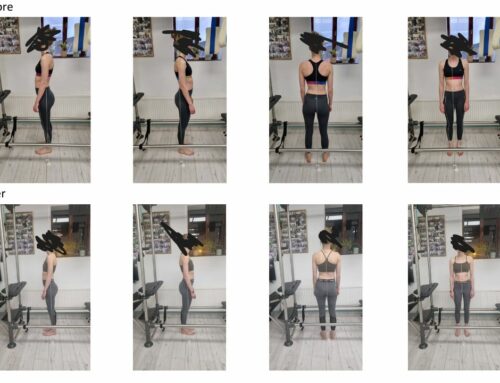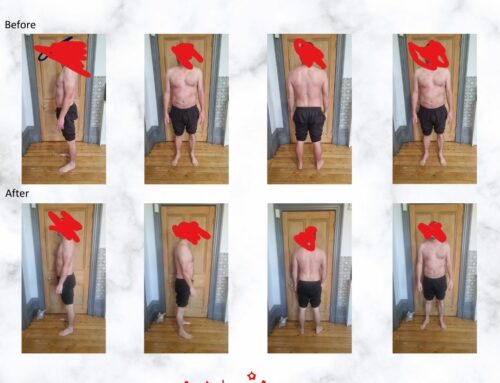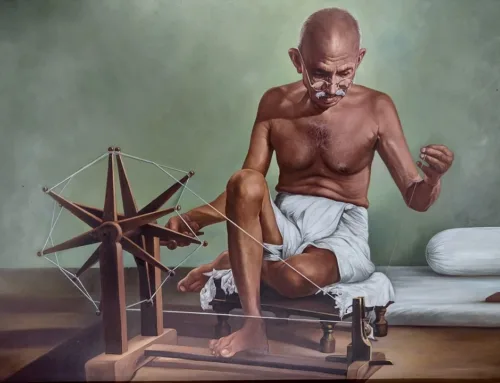As you know I teach and practice holistic lifestyle and Pilates, and I will often use the word core, even though I will say that in isolation the individual muscles will do nothing. However this is where the understanding of the full method of pilates apparatus and the body comes from. If you take class with me and particularly one to one, you are not flat on your back for 60 minutes. You are moving through side bends, rotating, standing sitting and doing all sorts of stuff. The picture below is an archival photo from the 1950’s of Joe and Eve Gentry. I would say this is all powerhouse and connection of the limbs and different planes in different positions. I did this move with Super league strength and conditioning coach Nigel Ashley Jones ( now at Scarletts, OZ, 2023). He thought is was an outstanding test for the rugby boys.
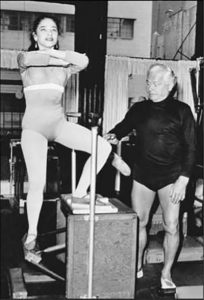
Everything starts from the centre of the body and we as humans are designed from inside out. As the saying goes: “You will never look good on the inside, till you look good on the outside”. When we move and I really feel this is in every movement method that we should strengthen, stretch, pandiculate and lengthen the body. This becomes lost, as we have seen with the perils of modern life, but also our perception and reaction.
There are many ideas around the globe on abdominal training, but so many are outdated. The abdominal wall is actually designed to go back 35-70 degrees in extension depending on how flexible your spine is. This is important for sports such as football, serving a tennis ball, climbers and we all require extension just to clean high windows or reach up to a cupboard. If we go back to ancient tribes, they speared fish, threw rocks and did all sorts of stuff which required flexor/extensor infant development patterns.
I first learnt about core training and core conditioning from Paul Chek. The thing is it’s not just superficial and muscular. It is finding a fully functional vital healthy body. When we are over stimulated by the surface of our body, we have not grown into our own authentic self. Now looking good is great, but not at the expense of losing vitality, well-being and spiritual development. The surface area or external body just becomes a mirage that continually leads to trouble and problems if not dealt with.
Now if we are just doing abdominal exercises on a flat surface with balance, you will perpetually shorten the front of the body.
Research by ‘Gold spink et al’ found that repeated contractions of a muscle in a shortened range is as little as 24 hours begins to drop sarcomeres which is the contractile unit of the muscle fibre and over time the powerhouse (rectus abs and obliques when viewed in isolation) shorten down pulling the chest forwards. A Goldspink 1977 research paper stated: “It is well known that muscle size is influenced by its pattern of activity”.
The abdominal wall was not just there to be looked at but used as a pump mechanism that feeds the organs and pumps blood everywhere. So we want to keep our abdominal wall versatile & flexible .
A contracted abdominal wall disrupts the breathing pattern and breathing is the chief pump mechanism in the body that moves fluids through the body bringing fresh blood, nutrition and oxygen in and takes venous blood which is a waste product away.
As soon as you lock your abdominal wall up, the diaphragm can’t drop with inhalation because of your organs have nowhere to go thus creating shallow breathing patterns.
Shallow breathing can then cause hyperventilation which disrupts your blood/gas ratio which sets you up for anxiety, nervousness and excessive sympathetic tone which makes you wound up, increase muscle tension and triggers a whole of other challenges.
A 2013 research paper stated: “The lungs cannot contract by themselves during respiration. Instead, they passively contract and relax as a result of the contraction and relaxation of the thoracic cage respiratory muscles, leading to gas exchange between the air and the lungs1). While relaxed expiration is performed by the passive recoil of the diaphragm, during forced expiration, the air is driven out as the diaphragm is forced upwards by a rise in intra-abdominal pressure induced by contraction of the abdominal muscles. Moreover, the diaphragm, a component of core stability, plays a role in respiration and trunk stability by controlling intra-abdominal pressure and reducing the stress on the spine through cooperative action with the abdominal and pelvic floor muscles).”2
There is of course the increase likelihood that anxiety can lead to de-pression and all that cortisol running around that can lead to attention deficit behaviours.
Want to know more, click here:
Bibliography
Nigel Ashley Jones – Superleague Rugby
Paul Chek you tube
Alison Salmond
2. https://www.ncbi.nlm.nih.gov/pmc/articles/PMC3805012/

